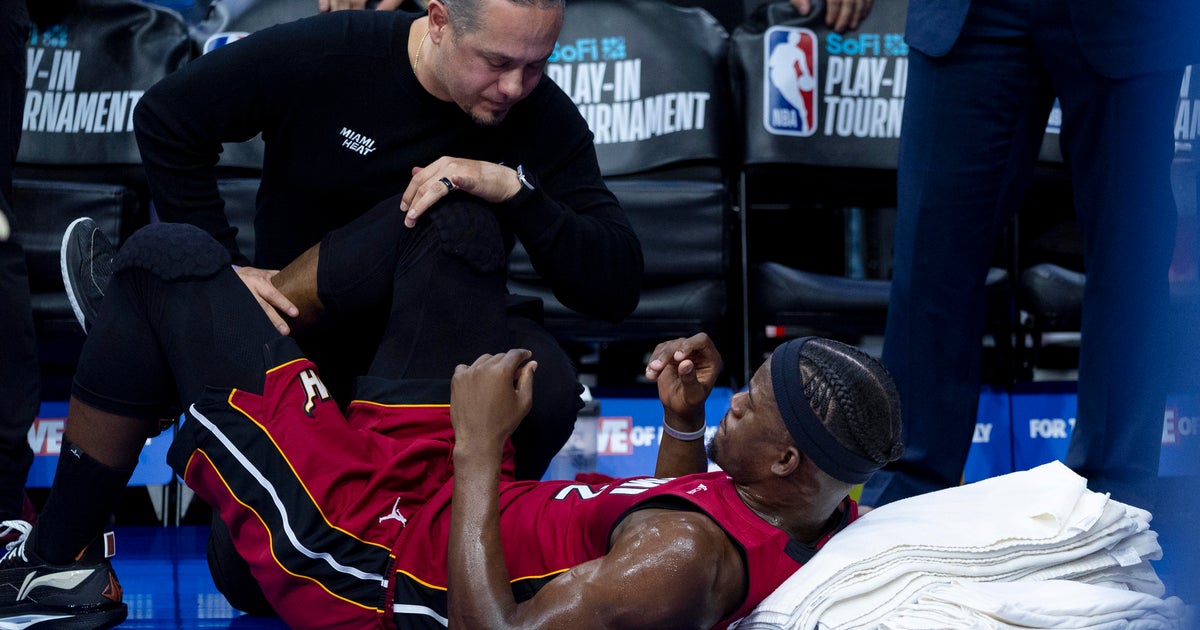Spring Training Report: Changing The Baseball Could Lead To Fewer Home Runs
(CBS New York) -- Opening Day is just a little more than a week away. And while much of the sports world has its eyes focused on the NCAA Tournament, Spring Training continues. MLB teams are preparing for another baseball season under the cloud of COVID. Hopefully this one will go the full 162 games as planned. And hopefully the sun will continue to shine through as the pandemic wanes and people return to the ballpark.
This week's Spring Training Report looks at the slight changes to the baseball that could affect the game, the mounting injuries across MLB and a rare triple play.
Another New Ball
Some differences in the game will still be obvious come April. Sparse fans in the stands may make for an unusual viewing environment, just as seats filled by cardboard cutouts did. Other differences, like a slight change to the baseball, remain indiscernible to the naked eye. But they can have a profound effect on how the game plays out.
Everyone likes home runs, except the opposing defense at the moment one is hit. But MLB also doesn't want big variations in the home run rate from season to season, particularly when that rate spikes. Former Marlins executive David Samson has argued that it ultimately comes downs to money. Teams don't want to pay players more in arbitration and free agency based on stats that were boosted by a livelier ball.
The League set a record in 2019, the most recent full season, hitting 6,226 longballs. That's a record 1.39 home runs per team per game. (To put that in perspective, 2014 saw 4,186 home runs, for a rate of 0.86 home runs per team per game.) The previous record was 1.26, set in 2017. Even the shortened 2020 season saw at rate of 1.28, which also broke the previous record, albeit over fewer games.
There was some speculation during the 2019 season that the balls were juiced. The League denied it, but admitted the previous season that some small changes to the ball had affected hitting. MLB owns Rawlings, which makes all of its baseballs by hand.
The League would like more hitting consistency. While some variation is inevitable, narrowing "...the manufacturing specifications of the ball in order to improve the consistency of performance," as recommended by MLB's scientific experts, will help.
A baseball has three wool windings around its center. Rawlings has relaxed the tension of the first one. The change implemented will have a couple of outcomes. It will lessen the ball's weight by under one-tenth of an ounce and make it slightly less bouncy.
MLB is looking to bring the home run rate back down to where it was previous to 2019, meaning somewhere between 1.15 (2018) and 1.26 (2017). But a small adjustment can have a big effect.
Injuries Continue To Mount
Every team would love to enter the season with a full complement of healthy players and then maintain it for an entire season. Of course, that's not really realistic, particularly with near-daily games for months on end.
New injuries are already starting to add up across the majors, just as players with previous injuries continue to limp through recovery. And the list includes some key contributors.
Boston Red Sox lefthander Chris Sale continues to work his way back from Tommy John surgery. The injury to his left elbow forced Sale to miss all of the 2020 season, and his recovery could stretch a month or more into the season. It's been about a year since a surgery that can take anywhere from 12 to 15 months of recovery.
New York Yankees pitcher Luis Severino, working his way back from the same injury, likely won't be back before the middle of the season. New York Mets pitcher Noah Syndergaard is also recovering from Tommy John surgery. He looks likely to miss the first two months of the season.
The Mets will also be without starter Carlos Carrasco, who recently tore his hamstring in a bullpen session. He is expected to return near the end of April. Cincinnati Reds pitcher Sonny Gray looks like he'll miss the first week of the regular season with back spasms.
Altuve Hits Into Triple Play
The Houston Astros were leading the Mets, 5-1, in the bottom of the sixth inning of Monday's Grapefruit League game. Second baseman Jose Altuve had the bases were loaded for his fourth at-bat of the afternoon.
He hit a sinking line drive right into the glove of second baseman Jose Peraza. The runner leaning off second couldn't get back to the base before being doubled up. The runner at first seemed to be going on contact and was easy to triple up with a leisurely lob from second.
The Astros held on to win the game, 5-4.


